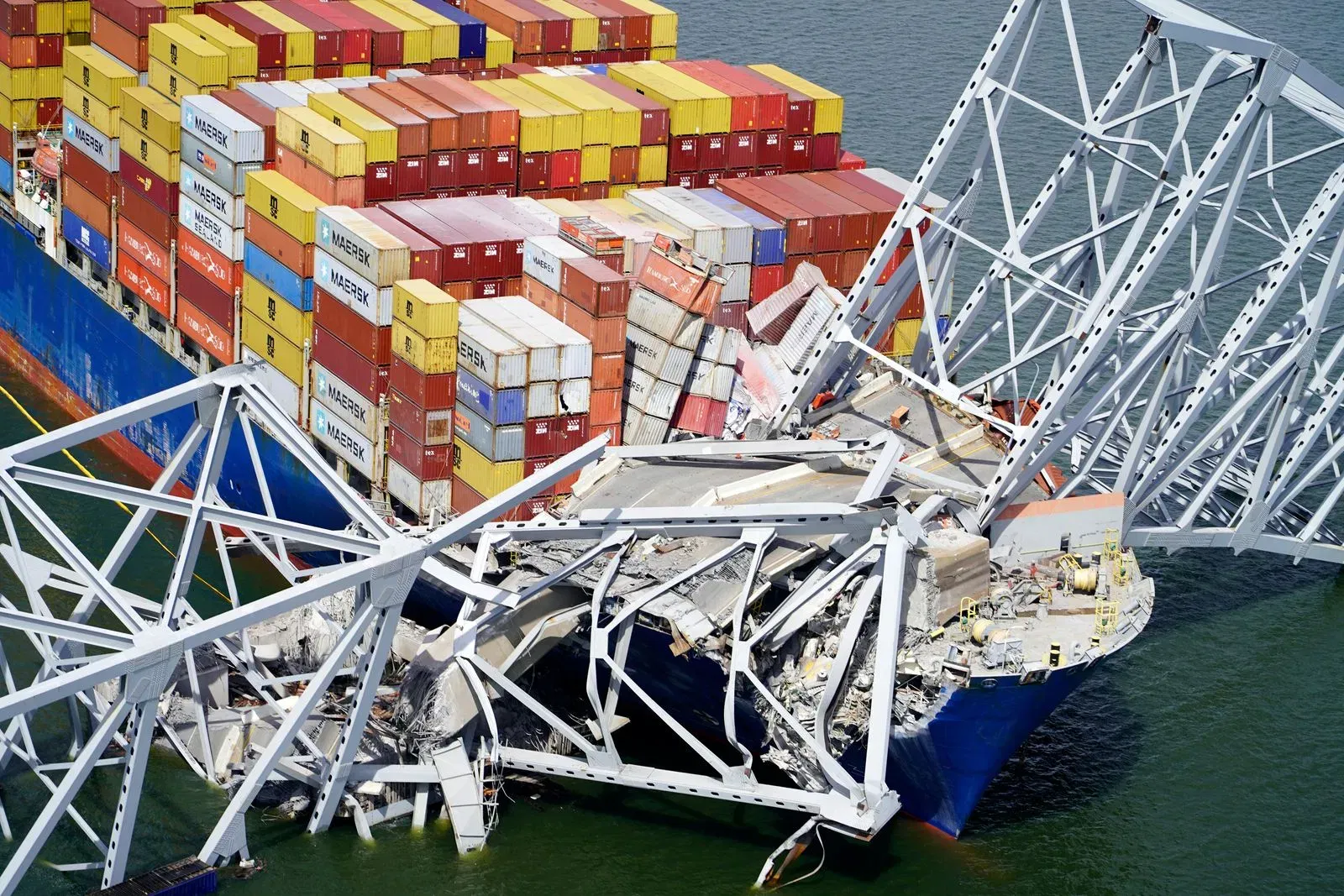The intricate operation to initiate the removal of debris from the tragic collapse of a Baltimore bridge is underway, marked by the arrival of specialized cranes. Heading the effort is the largest crane along the Eastern Seaboard, transported to Baltimore to spearhead the operation aimed at dismantling the wreckage of the collapsed highway bridge. The catastrophe not only halted the search for four missing workers but also disrupted the crucial operations of the city’s port.
As dawn broke on Friday, the arrival of a crane at the site signalled the beginning of the intricate task ahead. Maryland Governor Wes Moore disclosed that the substantial crane, capable of lifting up to 1000 tons, will join at least one other crane to clear the channel obstructed by the twisted remnants of the Francis Scott Key Bridge and the cargo ship involved in the collision earlier in the week. Governor Moore expressed confidence in the expertise of the personnel involved, referring to them as “the best minds in the world” devising strategies for the removal process.
Describing the challenge ahead as “an incredibly complex job,” Governor Moore emphasized its significance in reopening the Port of Baltimore and facilitating the recovery of any potential remains amidst the wreckage. He acknowledged the prolonged timeline anticipated for this endeavour, underscoring the daunting nature of the task at hand. Furthermore, Transportation Secretary Pete Buttigieg informed CNN that three heavy lift vessels are slated to arrive imminently, further bolstering the ongoing efforts.
Despite the concerted endeavours to restore the vital shipping channel and revive port operations, Governor Moore acknowledged the arduous journey ahead. The collision with the cargo ship, nearly the height of the Eiffel Tower, resulted in the tragic loss of lives and significant structural damage, with the bodies of two workers recovered and four others still unaccounted for.
The complexity of the situation necessitates meticulous planning before recovery efforts can progress. Authorities are cognizant of the submerged entanglement of steel and concrete, believed to encase the remains of the missing workers. Only after the debris is cleared can divers safely conduct search operations in the area, underscoring the paramount importance of expediting the removal process.
Governor Moore reiterated the unwavering commitment to prioritize recovery efforts, emphasizing the obligation to provide closure to the affected families. The diverse backgrounds of the victims, hailing from Mexico, Guatemala, Honduras, and El Salvador, reflect the international scope of the tragedy. Meanwhile, ongoing investigations by federal and state agencies aim to ascertain the circumstances surrounding the accident.
Amidst salvage operations, the economic ramifications loom large, with the indefinite suspension of port activities posing challenges to the national supply chain. Efforts to mitigate disruptions extend beyond Baltimore, with neighbouring ports poised to accommodate diverted cargo shipments. However, the scale of the endeavour necessitates significant resources and coordination, with authorities mobilizing swiftly to address the crisis.
As the investigation progresses, insights gleaned from data recordings and witness testimonies offer crucial clues into the events leading up to the collision. Swift response measures, including the halting of bridge traffic, have been credited with averting further casualties. Despite the devastation witnessed at the scene, concerted efforts continue to restore normalcy and uphold the integrity of the nation’s transportation infrastructure.
The resolve to overcome this adversity underscores the resilience of the community and the collective determination to navigate through the challenges ahead, reaffirming the nation’s commitment to safety, recovery, and progress.
